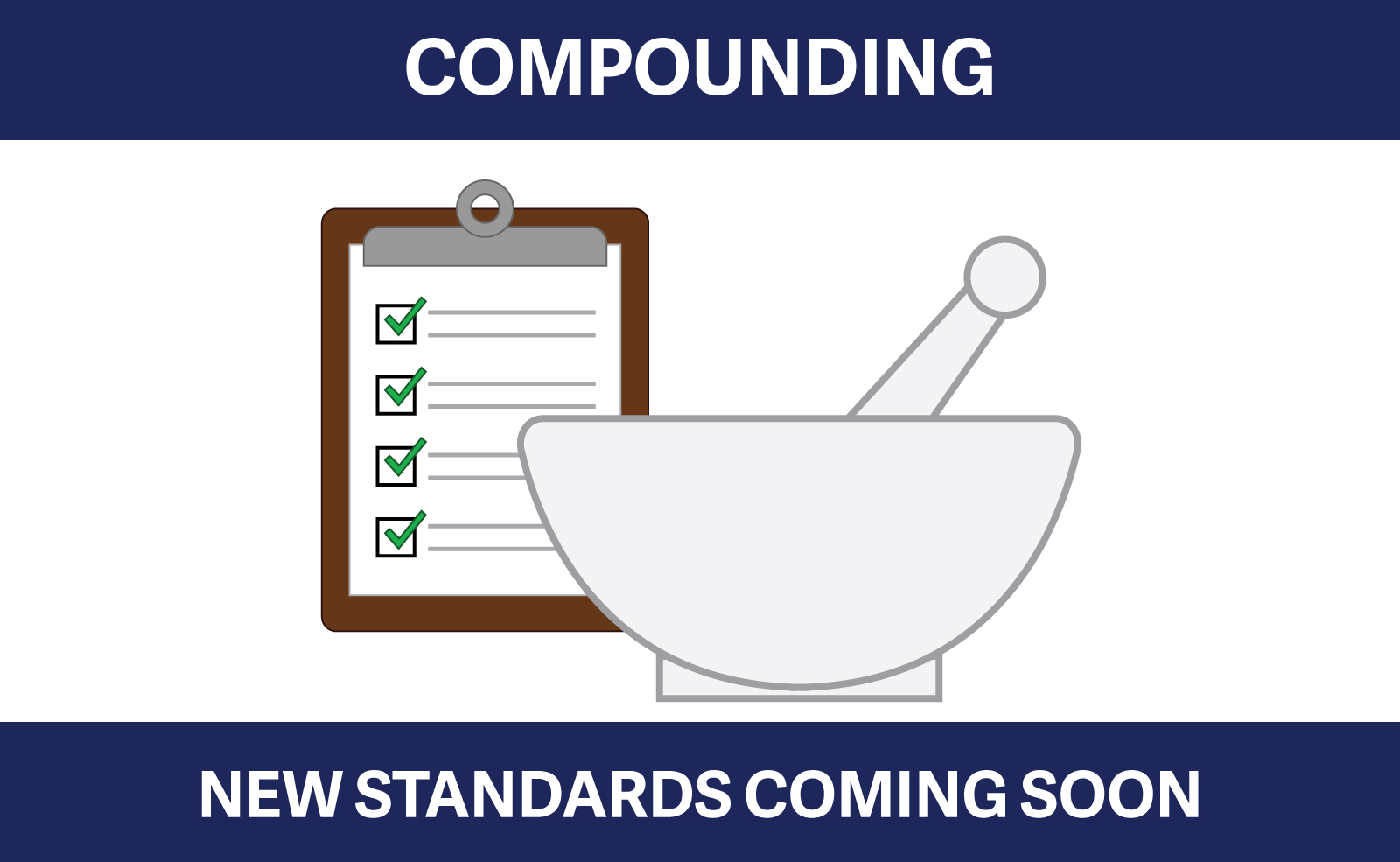New Pharmacy Compounding Standards Coming Soon
In April 2017, the College Board approved a four-year recommended implementation plan to adopt the new model standards for pharmacy compounding recently released by the National Association of Pharmacy Regulatory Authorities (NAPRA): Model Standards for Pharmacy Compounding of Non-hazardous Sterile Preparations, and Model Standards for Pharmacy Compounding of Hazardous Sterile Preparations.
A third and final Model Standards document for non-sterile preparation is expected to be released in 2017.
Compounding plays an important role in pharmacy practice, allowing individual ingredients to be mixed together in personalized strengths and dosages based on a patient’s needs. High-quality standards are needed to ensure preparation quality and safety when compounding drugs for patients.
Evolving practice as well as the increased awareness of the risks of compounding sterile preparations on the health of both patients and compounding personnel led the National Association of Pharmacy Regulatory Authorities (NAPRA) to develop new model standards for pharmacy compounding.
In particular, two recent incidents brought the need for more stringent standards to the attention of health regulators in the US and Canada. In 2012, a fungal meningitis outbreak killed more than 60 people and sickened hundreds more in New England. And an incident in 2013 occurred where nearly 1,200 Canadian cancer patients in Ontario and New Brunswick were supplied with weaker-than-prescribed doses of chemotherapy drugs.
These model standards are intended to better protect the safety of patients and compounding personnel and set national standards for pharmacy compounding. The standards are in the process of being adopted by provincial health regulators across Canada.
Implementation plan
Each phase in the implementation plan includes specific groupings of standards from the Model Standards. The College’s existing bylaws and policies will remain in place until May 2021 (i.e. after the four-year implementation period is complete). Once these new bylaws come into effect, all existing references to compounding standards will be repealed.
Pharmacies and pharmacy professionals who compound sterile preparations will want to follow the four-year phased approach to ensure they meet the new requirements by May 2021.
|
Phase 1 |
Phase 2 |
Phase 3 |
Phase 4 |
|---|---|---|---|
|
|
|
|
Implementing First Phase of New Standards by November 2017
Pharmacies and pharmacy professionals involved in sterile compounding will want to focus on completing the first phase of the implementation plan which includes a gap analysis and site plan, together with the standards listed above. The College recommends implementing by this phase by November 2017.
How to Prepare
While current pharmacy practice for the preparation of sterile products in Canada already includes many of the patient safety and quality assurance requirements contained in these new standards, additional requirements will be introduced. Pharmacies and pharmacy professionals will be required to address gaps in their current practice and ensure that they are in compliance with the new standards by no later than May 2021.
Gap Identification Tools
To help pharmacies and pharmacy professionals identify gaps in their compounding program and practices, and assist with developing plans to become compliant with the new compounding standards, the College has developed Gap Identification tools for the two new Model Standards for Pharmacy Compounding.
- Model Standards for Pharmacy Compounding of Non-hazardous Sterile Preparations
- Model Standards for Pharmacy Compounding of Hazardous Sterile Preparations
Stay tuned
The College will continue to provide updates and information on the implementation phases and their respective deadlines.
For additional information, visit our dedicated resource page: Implementing the New Model Standards for Pharmacy Compounding.


 Share
Share



